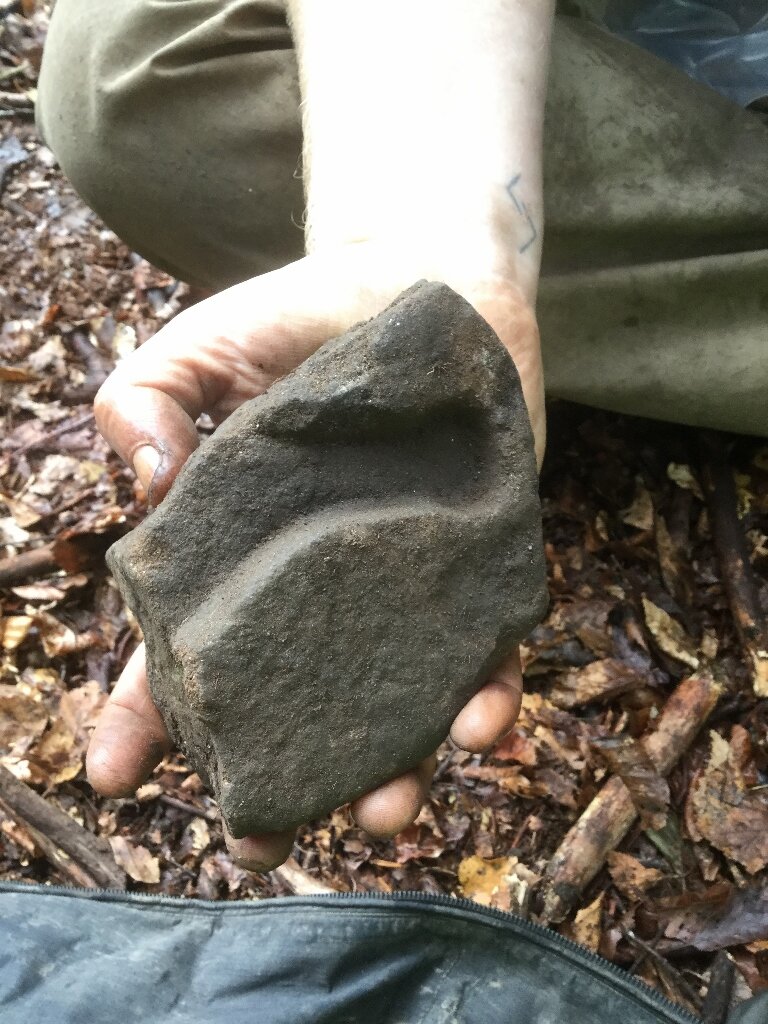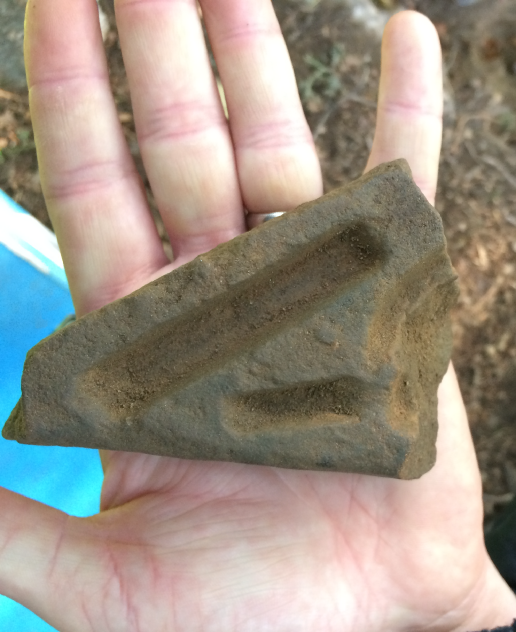Evidence of Metalworking at King's Seat
AOC has been working with Perth and Kinross Heritage Trust (PKHT) and Dunkeld and Birnam Historical Society (DBHS) on an exciting three year project investigating the hillfort of King’s Seat, above Dunkeld. This project offers the opportunity for volunteers and local schools to partake in fieldwork and receive training in archaeological methods and practice whilst uncovering the history of this enigmatic site.
King’s Seat hillfort is located on the north side of the River Tay as it runs through Dunkeld. The fort was long inaccessible due to rhododendron growth over the summit, however, thanks to a gargantuan effort from DBHS volunteers, the summit of King’s Seat is now free from vegetation, meaning that the fort can to be visited, appreciated and excavated.
The fort’s defences surround a central citadel measuring about 35m x 25m, situated at the summit of the hill with a cascading series of ramparts taking in the lower terrace. To the west is a flight of three terraces, from the lower terrace which is connected to the upper citadel by a pathway towards an entrance at the north.
The first of three seasons of excavations at King’s Seat took place in September 2017, and we began with some site clearance (nothing compared to the previous rhodedendron clearance!). We had chosen four key areas for focus this year: the series of ramparts to the west (Trench 1), the proposed entranceway where the rampart seems to terminate (Trench 3), the mound situated at the highest point of the citadel adjacent to a large glacial erratic boulder (Trench 2), and a flat area within the upper citadel (Trench 4).
Before long we were hitting archaeological deposits and bedrock in Trench 2, along with a selection of interesting artefacts. We found pieces of flint debitage and a rather large cache of small rounded stones which opened a lively debate amongst the team about projectiles! We also found a fragment of a mould (above, left), which looked likely to have been used to cast an object such as a mirror.
Trench 3 explored the structure of the wall itself, and we worked to both reveal and understand the facing of the wall and deposits accumulated against it. We could see some attempts to face in the inner wall, and surprisingly, not long after the mirror mould was recovered from Trench 2, we discovered two more fragments. These were from the same mould, which was formerly a saddle quern, and likely formed a mirror-shaped object.
The Trench 1 team also found a further mould (above, right), this time for an ingot, which would have been used to cast metals into shapes suitable for further processing or transporting, but they also found a beautiful piece of worked quartz within the terraces. It became clear that a lower terrace was likely related to landscaping by the Atholl estates.
Once Trench 4 was opened, our artefacts were coming in thick and fast. We were finding many examples of animal bone and teeth, as well as a spindle whorl and fragments of crucible (which we began finding in other areas also). These crucible fragments, paired with the moulds, gives us a interesting idea of activities which may have been taking place on this fort. Artefacts so far seem early historic in character; however we eagerly await further dating evidence from samples underneath the wall structure and elsewhere across the site.
In addition to a fantastic team of community volunteers, we also had visits from local primary schools, as well as work experience students. If you would like to find out more, please have a look at our blog, and consider joining us onsite in 2018!
King’s Seat Archaeology Project is managed by Perth and Kinross Heritage Trust, in partnership with the Dunkeld and Birnam Historical Society. This citizen-science project is supported by the National Lottery through the Heritage Lottery Fund, as well as the Gannochy Trust and SSE Griffin and Calliacher Community Fund.


